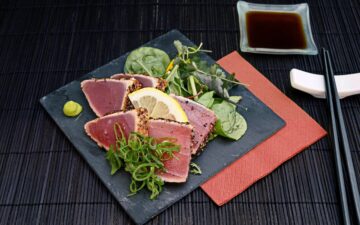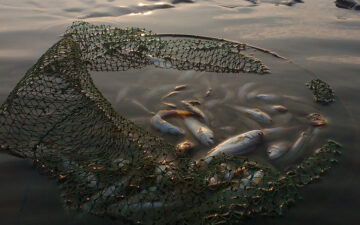In a 2016 study, 3 in 10 pregnant women had mercury levels higher than the EPA safe limit.
For years, seafood has been heralded as the nation’s healthful food choice. In the 2010 Dietary Guidelines for Americans, the Food and Drug Administration (FDA) prescribes that expecting mothers eat two to three servings (8-12 oz) of fish per week, with an emphasis on species low in mercury and high in omega-3 fatty acids, part of a balanced diet.
At the same time, more and more federal reports have emerged that warn of the numerous health risks associated with seafood consumption, particularly for women. According to a 2016 study conducted by the Environmental Working Group (EWG), expecting mothers who follow the FDA’s dietary guidelines routinely have unsafe levels of mercury in their bloodstream. Of the 254 pregnant women tested by the EWG who ate the recommended amount of seafood, one in three participants has mercury levels deemed unsafe by the Environmental Protection Agency (EPA). During the last week under the Obama administration, the FDA and EPA issued a revised set of guidelines, along with a notably longer list of species that pregnant should avoid altogether.
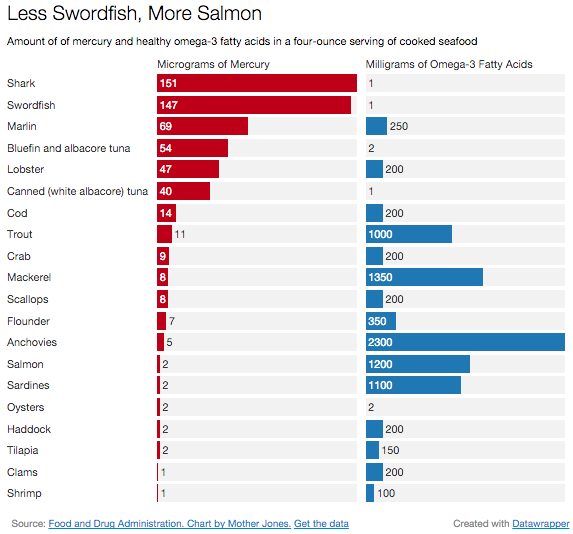
The federal government’s contradictory recommendations has spawned confusion amongst American consumers and left women vulnerable to potential toxin exposure. The truth of the matter is that this shift in dietary advice over the years reflects the changing health of our ocean ecosystems, more than anything else.
So vast and so powerful, the ocean seemed to exist out of the realm of human control or influence. Historically, people felt they could never take too many natural resources out of, or put too much waste into, the ocean. How wrong we were. Years of exploiting and polluting our blue planet have taken a devastating toll. Currently, over 85% of the world’s fisheries are classified as either fully exploited or critically overexploited. In 2015, 5.25 trillion particles of plastic, weighing over 270,000 metric tons, were found floating throughout the world’s gyres, fatally entangling sea life and contaminating the global food web. As marine ecosystems suffer, the more it has become clear that the well-being of humans and sea life are intimately connected. That ocean degradation is in fact a human rights issue. And that when it comes to seafood, marine pollution is essentially an attack on women’s health.
First off, plastic is manufactured using chemicals like phthalates, flame retardants, and BPA— all of which have been linked to major human health issues. Notably, a series of research studies conducted in 2008 and 2009 discovered even low doses of BPA alters breast development, increases breast cancer risk, is associated with recurrent miscarriage, may permanently damage female ovaries, and can influence behavioral development of young girls. The hazards associated with our waste are only magnified once in seawater.
Once in the ocean, plastic trash acts as a sponge for other harmful pollutants, including DDT, PCB, and other long-since banned chemicals. Resultantly, studies have found that a single plastic microbead can be one million times more toxic than the surrounding seawater. Floating microplastics contain known endocrine disruptors, which can cause various human reproductive and developmental problems. Chemicals, such as DEHP, PVC, and PS, commonly found in plastic marine debris have been connected to rising cancer rates, infertility, organ failures, neurological diseases, and early onset puberty in women. As sea life accidentally eats our trash, these toxins make their way through the great oceanic food web, until they finally end up on our plates.
The scale of ocean pollution is so vast, the body burdens of every sea animal has been tainted. From the stomachs of salmon to the blubber of orcas, man-made toxins have bioaccumulated across every level of the food chain.
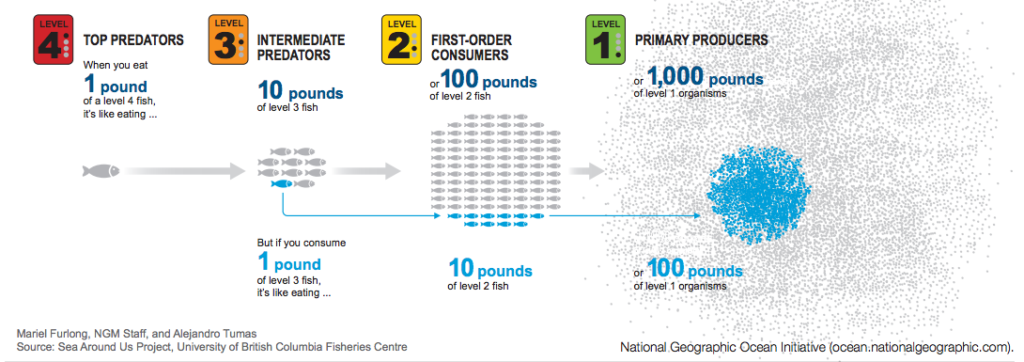
Due to the process of biomagnification, apex predators carry larger toxin loads, which make consumption of their meat a risk to human health.
In the Dietary Guidelines for Americans, the FDA recommends pregnant women not eat the mercury-heavy fish, such as tuna, swordfish, marlin, that tend to sit at the top of food chain. This suggestion, while sound, neglects cultural discrepancies.
The indigenous tribes of the Arctic, for example, depend on the rich, fatty meat and blubber of marine mammals for sustenance, fuel, and warmth. Studies have even attributed the high concentration of vitamin C in narwhal skin to the overall survival success of the Inuit people. Unfortunately, because of their historical diet of apex predators, the Inuit people of the Arctic have been most strongly affected by ocean pollution. Though produced thousands of miles away, persistent organic pollutants (e.g. pesticides, industrial chemicals) tested 8–10 times higher in the bodies of Inuit and in particular in the nursing milk of Inuit mothers. These women cannot adapt so easily to the FDA’s shifting guidelines.
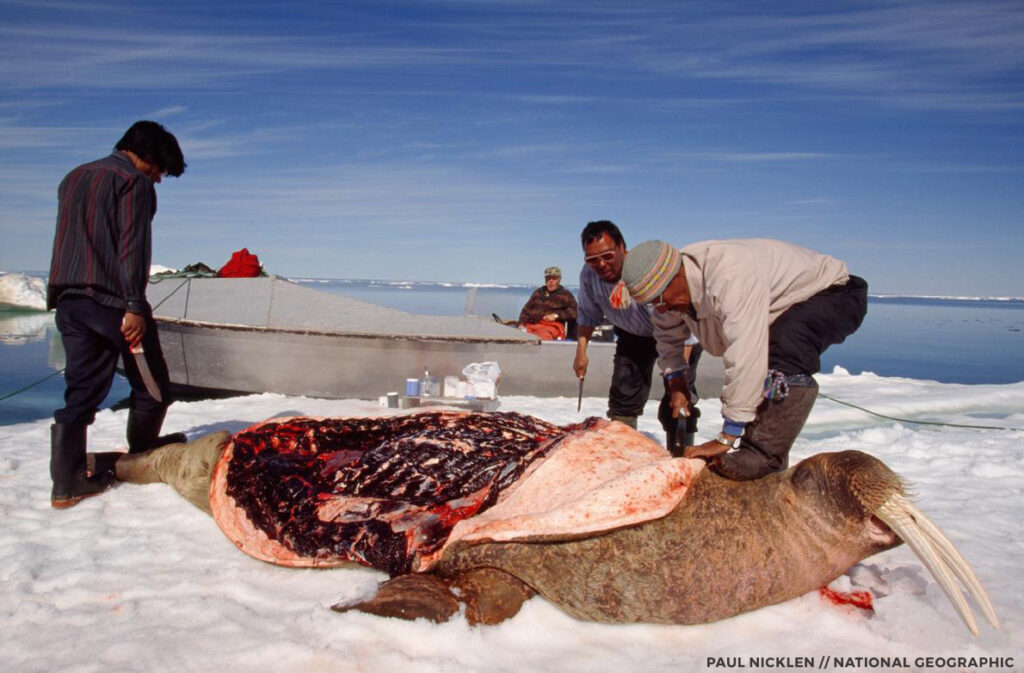
Throughout southeast Asia, shark fin soup has long been viewed a crowning delicacy. Contrary to the myth that they offer unique nutritional value, shark fins actually have mercury levels that are up to 42 times higher than the monitored safe limit. This means consuming shark fin soup is actually highly hazardous, especially for children and pregnant women. However, like the animal itself, there is a dense cloud of misinformation surrounding shark fins. In Mandarin-speaking countries, shark fin soup is often called “fish wing” soup— as a result, roughly 75% of Chinese are unaware that shark fin soup comes from sharks. So, even if a pregnant woman’s ingrained cultural beliefs are uprooted to comply with the FDA, she may not even have the agency to avoid exposure. Whether aware of the risk or not, American women are similarly mislead as consumers.
While some risk concerning seafood consumption may be reduced by avoiding certain species, that solution is undermined by the emerging problem of seafood fraud. The overexploitation of global fisheries has led to a rise in seafood fraud, wherein seafood products are mislabeled to increase profits, avoid taxations, or hide illegality. A common example is that dolphins killed in bycatch are regularly packaged as canned tuna. A 2015 investigative report found that 74% of seafood tested at sushi restaurants and 38% at non-sushi restaurants in the U.S. were mislabeled. In one New York grocery store, blue line tilefish— which is on the FDA’s “Do Not Eat” list because of its high mercury content — was being relabeled and sold as both “red snapper” and “Alaskan halibut”. In Santa Monica, California, two sushi chefs were caught selling clients whale meat, insisting it was fatty tuna. Seafood fraud not only distorts markets and skews estimates of sea life abundance, it poses a serious health risk to fish consumers worldwide.
So… to eat or not to eat?
From toxic microplastics to downright fraud, eating seafood for dinner tonight may feel daunting. But don’t let that scare you away from the food group forever! High in omega-3 fatty acids and lean protein, fish is chock full of health benefits for women and men alike. What the dietary decision really comes down to is situational awareness. Does the seafood product have an eco-label? Are you shopping local? Is this species known to be high in mercury? Put simply: do you know what you’re buying? Arm yourself with this knowledge to protect yourself other consumers. Truth and facts matter.

